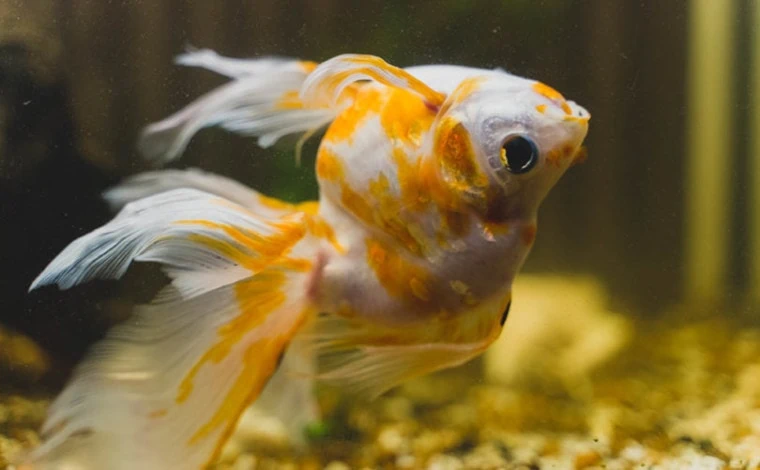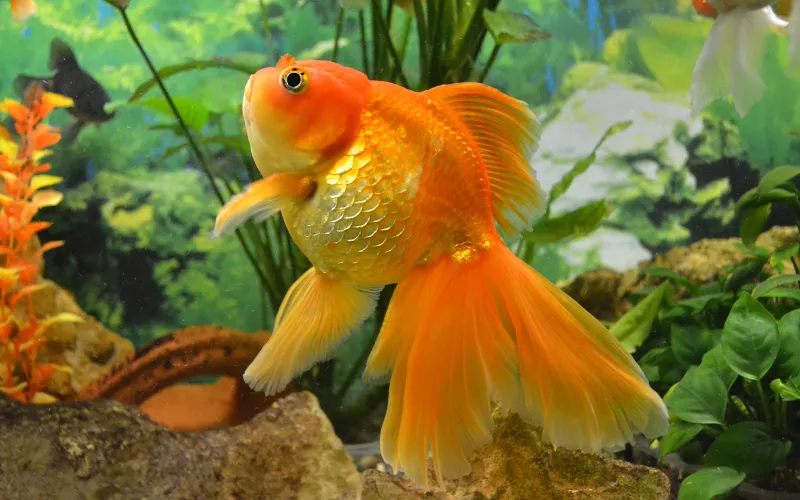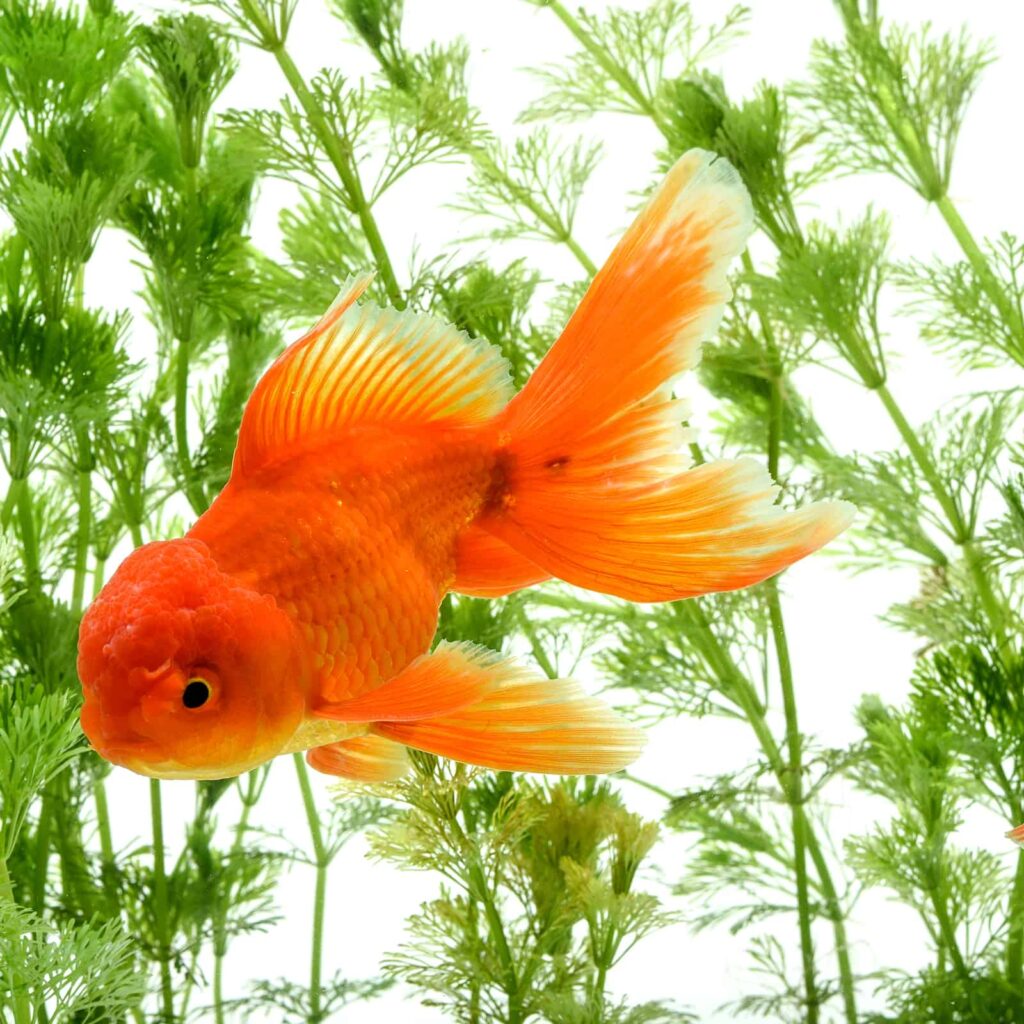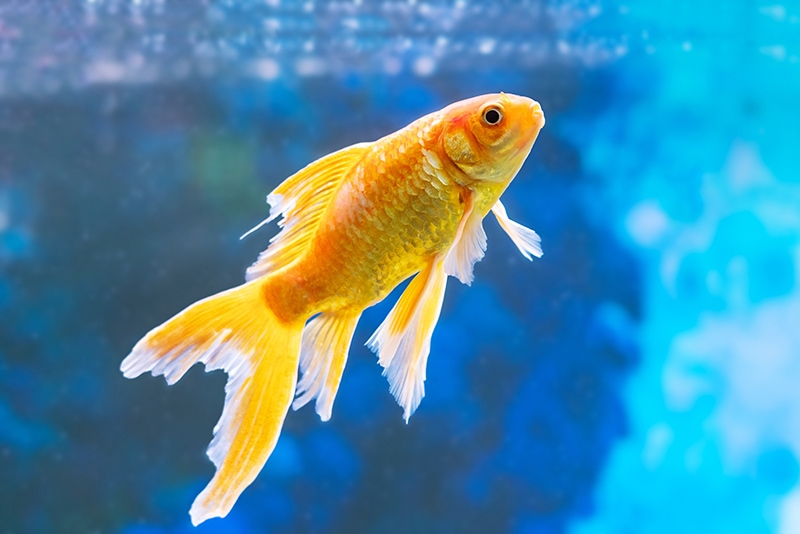
Swim Bladder Disorder in Goldfish is a common condition that can cause your finned friend to float upside down or perform unusual movements like barrel rolls. But fear not! This guide will help you navigate the depths of this fish ailment, shedding light on its causes and the intricacies of goldfish anatomy.
We’ll also explore the process of diagnosing and treating Swim Bladder Disorder, so you can help your beloved goldie get back on track quickly. From vet visits to home remedies, you’ll be equipped with the knowledge to provide the best care for your aquatic companions. Dive in to learn more about keeping your fish swimming happily and healthily!
Understanding Swim Bladder Disorder in Goldfish

Ever noticed your golden buddy swimming upside down or sideways? If yes, your fish might need some health check-ups.
What is Swim Bladder Disorder?
Swim Bladder Disorder, often just called bladder trouble in the aqua circles, impacts a fish’s ability to remain upright. It’s like the marine version of getting your shoe stuck in a sidewalk crack. But unlike a shoe mishap, it’s not so easy to pull yourself out.
When this happens, goldfish often float at the top or sink to the bottom of their tanks. It’s a wild roller coaster ride they didn’t sign up for.
Causes of Swim Bladder Disorder
Now onto the “whys” of the bladder trouble. It could be due to various things, from a poor diet to water quality issues, to physical damage. It’s like a buffet tray of unwanted fishy troubles.
Sometimes, it’s genetic (similar to your Aunt Linda’s chocolate chip cookie addiction). Other times, it’s an overgrown organ squishing the swim bladder. Goldfish can’t exactly pop over to the surgeon for a quick fix, can they?
A Glance at the Goldfish Anatomy
Breaking down goldfish anatomy is as intricate as assembling IKEA furniture. To keep it simple, fish have a swim bladder, a small sac filled with gas. It works much like a life jacket, helping them to float or sink as they please. When a fish struggles to control their buoyancy, Swim Bladder Disorder is the likely suspect.
Common Symptoms of Swim Bladder Disorder
So, how do you know your precious golden swimmer is in trouble? Signs could range from them swimming on their sides, flipped upside down (no, they’re not playing dead), or even sinking to the bottom of the tank like a grumpy submarine. Sometimes they don’t feel like eating their broccoli, I mean, fish food. Changes in poop (yes, poop) can be a sign too. Scope it out!
Now that you’re well-acquainted with Swim Bladder Disorder basics, its time we dived (pun intended) into spotting it sooner and seeking out the needed remedies. Hang tight, we’re here to make you the confident fish-parent you are meant to be!
Diagnosis and Treatment for Swim Bladder Disorder in Goldfish

Let’s dive into the details. Get it? Dive? Fish? Anyway. Let’s move onto Diagnosis and Treatment.
When to Visit the Vet: Recognizing Abnormal Behavior
Is your goldfish doing the backstroke more than usual? Not the sportsman, it’s probably sick. Don’t wait for your fish to learn other olympic routines. Spotting odd behavior early can save your pet. Swimming erratically, floating upside down or resting at the bottom too much isn’t normal. So, if your goldfish has been practicing these behaviors, it’s time to visit the vet.
As we jump into our imaginary tank, let’s learn how vets figure out what’s happening.
Steps in Diagnosing Swim Bladder Disorder
Don’t worry; they don’t make the fish run on tiny treadmills. Vets use simple tools like an X-ray or ultrasound. Simple physical examination and understanding fish’s history might also help. After confirming Swim Bladder disorder, they roll out the treatment plan.
Getting the fish back to “floating” condition doesn’t have to be nerve-wracking. So, let’s have a look at different treatment options.
Treatment Options: Medication, Surgery, or Home Remedies
- Medication: There are several medications available to treat Swim Bladder Disorder. Antibiotics can be used if the cause is a bacterial infection. Anti-parasitic medications are used when parasites are the culprits. Your veterinarian can prescribe the appropriate medication after a proper diagnosis.
- Home Remedies: These can be useful for mild cases or as supportive treatments.
a. Peas: Peas are a high-fiber food that can help relieve constipation in fish, which might be contributing to the disorder. To feed peas to your goldfish, boil them until they’re soft, then remove the shells and mash the insides into small, bite-sized pieces.
b. Epsom Salts: If constipation is a suspected cause of Swim Bladder Disorder, a bath in Epsom salts can help. Dissolve 1-3 teaspoons of Epsom salt per gallon of aquarium water in a separate container. Place the affected goldfish in the bath for about 15-20 minutes, then return it to its normal tank. - Surgery: In severe cases, surgery might be necessary. This is usually a last resort when other treatments have failed or if there is a physical abnormality in the swim bladder. However, surgery on fish is risky and should only be performed by an experienced veterinarian.
Post-treatment, it’s vital to ensure your pet buddy bounces back to its best. That’s where the recovery process comes in.
Understanding the Recovery Process
It involves closely monitoring the fish’s behavior, food intake, and water conditions. Keeping the water clean, providing nutritious food, and minimizing stress helps in speedy recovery.
And voila! Meet your happy, healthy goldfish again, ready to rule the tank. But remember, keeping the disorder away is as critical as treating it. Up next, let’s talk about preventing the Swim Bladder disorder.
Preventing Swim Bladder Disorder in Goldfish

Swim Bladder Disorder is like the ghost that haunts goldfish owners in broad daylight. But, worry not! By understanding its causes and recognizing preventative measures, living in fear will become a thing of the past.
The Role of Diet in Preventing Swim Bladder Disorder
Goldfish are what I like to jokingly call “the garbage disposals of the sea.” They’ll eat (or try to eat) anything and everything. Unfortunately, this doesn’t spell out good news for their swim bladders. A diet high in protein and fiber, with a balance of dried and fresh foods, is the key to keeping swim bladder issues at bay.
Importance of Regular Goldfish Tank Maintenance
Let’s relate the goldfish tank to your bedroom. How would you feel if you had to live amid pizza boxes and dirty laundry? Not great, right? Same goes for goldfish. Elements like dirty water and incorrect temperatures can stress fish and lead to Swim Bladder Disorders. Regular cleaning and monitoring of tank conditions can prevent these issues.
Understanding Proper Feeding Techniques
Feeding goldfish may sound like child’s play, but it requires great care. Overfeeding can cause constipation, a common catalyst for Swim Bladder Disorder. It’s best to provide small amounts of food several times a day than one large feast. Think tapas, not Thanksgiving.
Surprising Risk Factors You May Not Know
Sometimes, even with all the preventive measures in place, Swim Bladder Disorders can sneak in. Factors like genetics, age, and even the shape of your goldfish can predispose them to this issue. Knowing these can help you stay extra vigilant with your slippery friends.
In the next section, we’ll dive deeper into holistic care for goldfish. Relax, it’s not about teaching them yoga, but ensuring they have their fins down in the best environment possible. Not only will this foster their ninja-like swimming skills, but it will also keep that dastardly Swim Bladder Disorder away.
Holistic Care for Your Goldfish

Looking after your goldfish isn’t all about maintaining water quality or feeding them right. It also involves considering their mental and emotional health. Think of it as holistic goldfish parenting.
How Stress Affects Your Goldfish’s Health
Ever wondered if your sparkly friends get stressed? Oh, they do. Stress can weaken their immune system and make them prone to Swim Bladder Disorder.
Poor water quality, sudden temperature changes or aggressive tank mates can stress them out. When stressed, they may stop eating or hide away. Just like you after a hectic work week, eh? Comfort them, as you would want to be comforted.
Providing the Right Environment for Goldfish
Imagine living in a cramped, dirty room. Not too charming, right? Well, same for your goldfish. A clean, spacious tank, suitable tank mates, and a well-balanced diet can make all the difference.
Like hydro-hipster flats, the tank should have rocks and plants for them to interact with. A comfortable environment promotes their well-being and reduces the chance of Swim Bladder Disorder.
Why Mental Stimulation is Important for Goldfish
Goldfish are no Einsteins, but they do need mental exercises. Introduce new toys, rearrange the tank décor or let them spot you once in a while. These stimulate their little, orange minds and keep them happy.
Mentally active goldfish are healthier. They resist diseases better and live longer. A happy goldfish is a healthy goldfish. So, keep them stimulated, folks!
Wrap Up
Swim Bladder Disorder in goldfish is an issue affecting buoyancy that can be born from varied causes. However, through attentive care, knowledge of goldfish anatomy, being alert to symptoms and knowing when it’s time to involve a vet, you can navigate this challenging scenario.
Preventing this disorder underpins largely on diet control, optimal tank conditions, and proper feeding techniques, all of which contribute to a sound fish environment. Taking a holistic approach to fish care, including stress management and mental stimulation, ensures not just physical, but holistic wellbeing for your scaly friend.
Frequently Asked Questions (FAQ)
Question: What is Swim Bladder Disorder?
Answer: Swim bladder disorder is a common condition in goldfish where the swim bladder, an organ that helps the fish balance and swim upright, malfunctions leading to the fish having difficulty swimming normally.
Question: What causes Swim Bladder Disorder?
Answer: Swim bladder disorder can be caused by a variety of factors including improper diet, poor water conditions, or bacterial infections.
Question: How do I recognize Swim Bladder Disorder in my Goldfish?
Answer: Goldfish with swim bladder disorder may have trouble swimming, often floating on one side, upside down or struggling to stay upright.
Question: What are some treatment options for Swim Bladder Disorder?
Answer: Treatment options vary from changing the fish’s diet, using antibiotics for bacterial infections or in severe cases, surgery may be necessary.
Question: Can Swim Bladder Disorder be prevented?
Answer: Yes, with a proper diet, regular tank cleaning, and appropriate feeding techniques, you can significantly reduce the risk of swim bladder disorder in goldfish.
Question: Is stress a factor that might impact my goldfish’s swim bladder health?
Answer: Absolutely, stress significantly affects goldfish health, including their swim bladder. Ensure maintaining a calm, ideal environment for their well-being.
Question: Why is my goldfish’s mental stimulation important?
Answer: Mental stimulation is vital for a goldfish’s well-being. Engaging your fish in activities and providing a stimulating environment can boost their overall health, and help avoid health issues such as swim bladder disorder.



